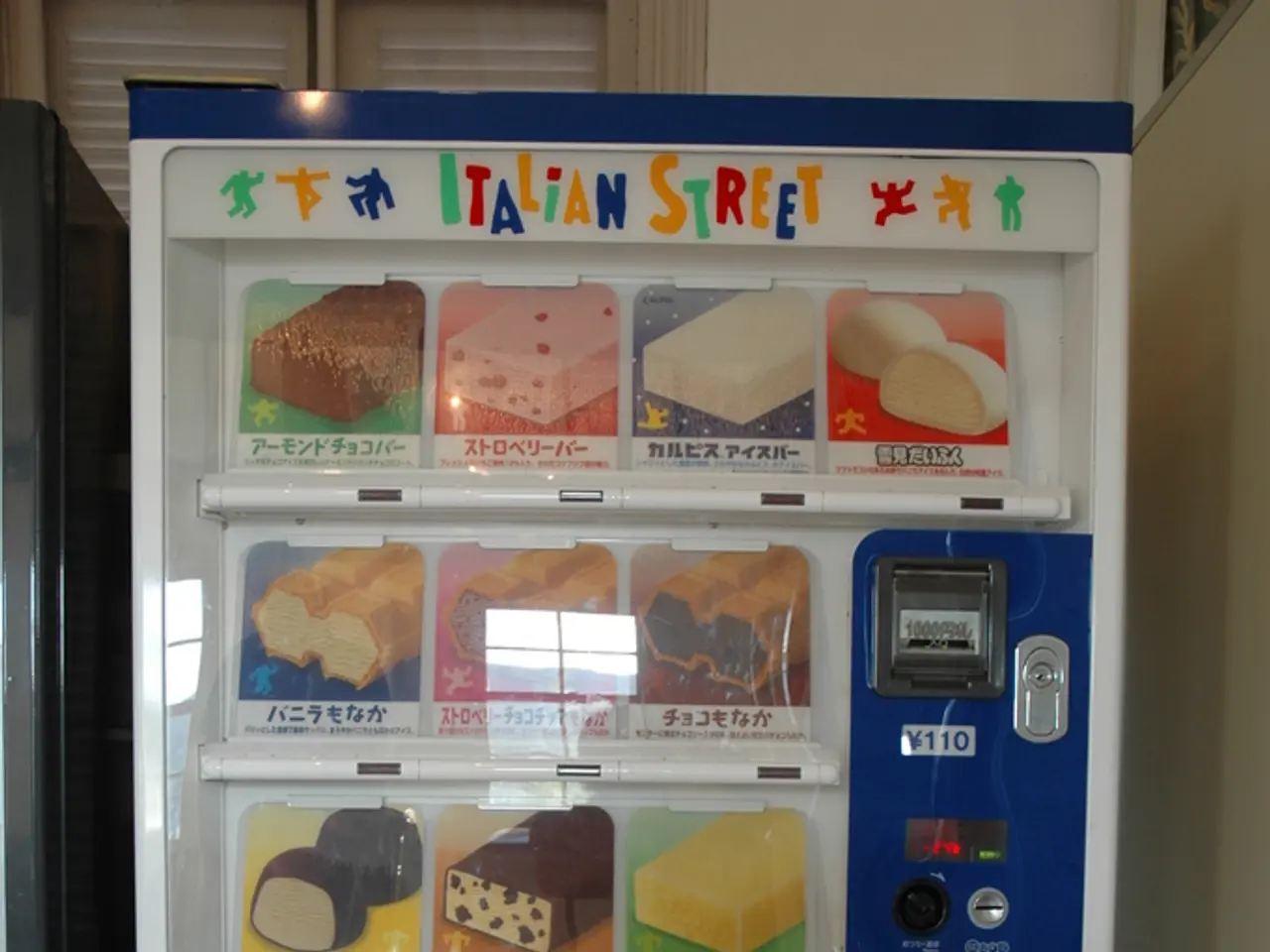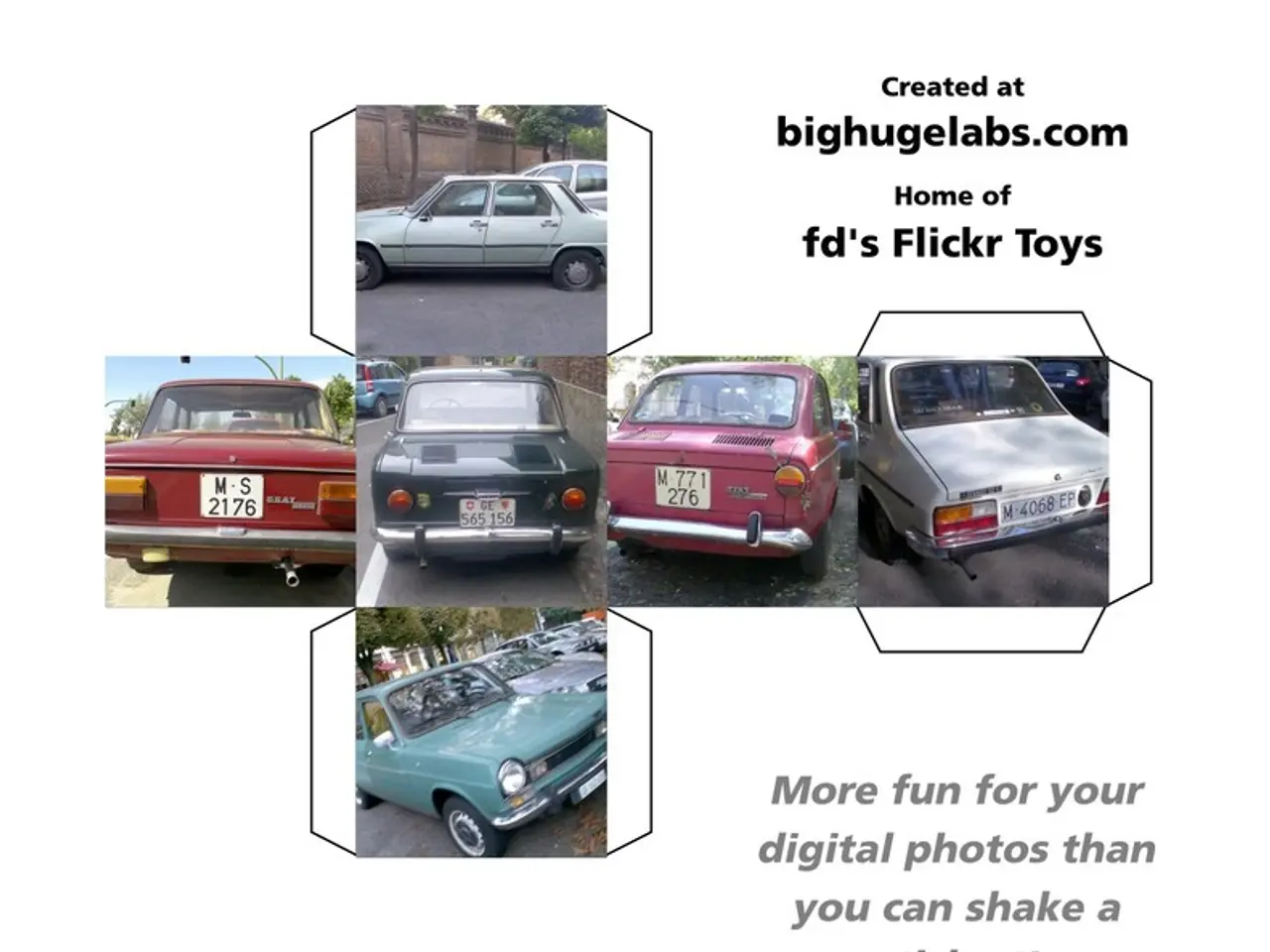Unraveling the existence of a self-educated graphic designer: a typical day with Rittsu Kogarasuashi
In the ever-evolving world of design, a shift towards greater inclusivity is underway, particularly for self-taught creatives. This transformation, expected to be fully realised by 2025, is being driven by innovation-led education, inclusive design practices, accessibility improvements, and a focus on diversity beyond formal credentials.
One individual at the forefront of this change is Rittsu Kogarasuashi, a self-taught communication designer and the lead designer at indie publishing house Paper Sky Design. Kogarasuashi's early career was filled with trial and error, but she has since found success through determination, a belief in her skills, and a commitment to pushing the boundaries of design.
Kogarasuashi's journey is emblematic of the challenges faced by many self-taught designers, who often struggle to find stable income work due to a lack of formal education and network connections. However, the design industry is shifting away from remote and unprofessional freelance work, making way for a more structured and respectable career path.
In this new landscape, clear communication and expectations are key. Kogarasuashi believes that design is much more than just a portfolio; it requires a deep understanding of the roles one is employing or hiring, and ensuring the payment is substantial for the amount of work. Clients and companies need to understand this, and the industry as a whole is moving towards this realisation.
Kogarasuashi is not alone in her belief that the design industry needs to improve to create a more inclusive environment. She collaborates with a global roster of authors, voice actors, and digital creators, all of whom share her vision for a more diverse and equitable design world.
This evolution is being facilitated by several key elements. Innovation-led and interdisciplinary design education is becoming the norm, with models shifting from traditional pathways to approaches that emphasise design thinking, real-world problem solving, and collaboration across disciplines. This benefits self-taught creatives who can access knowledge and skills through non-traditional routes and online resources.
The focus on designing for broad user needs, including disabilities, age, gender, and cultural diversity, has expanded. Industry leaders integrate accessibility tools such as screen readers, keyboard navigation, and AI-powered features like image descriptions to enhance usability. This attention to inclusivity permeates professional expectations, opening doors for designers who specialise in or advocate for inclusive solutions, regardless of formal training.
Greater industry recognition of diverse talent is also a significant factor. Although ageism persists, the design field is growing more inclusive across other dimensions such as disability, race, gender, and background. Software providers and design platforms actively listen to diverse users and incorporate feedback to improve usability and experience, making it easier for self-taught designers with different challenges to develop and contribute professionally.
The shift in hiring and career pathways is another crucial aspect of this transformation. As design becomes more interdisciplinary and user-centered, the value placed on demonstrable skills, portfolios, and innovation potential is increasing relative to formal degrees. This shift has created new career opportunities for self-taught creatives who engage with evolving technologies and inclusive design practices.
The influence of social trends in inclusivity beyond design is also playing a role. Broader cultural movements, such as inclusive beauty redefining industry norms, encourage the design field to embrace diversity in creators and users alike. Businesses adopting inclusive values gain a competitive advantage by appealing to wider markets and driving innovation, setting an example for creative industries to follow.
By 2025, the design industry will be a very different place. It will increasingly value skill, innovation, and a commitment to inclusivity over formal credentials alone, creating a more welcoming environment for self-taught creatives motivated to contribute diverse perspectives and inclusive solutions. However, it is important to set realistic goals as to what can and cannot be done in the design industry, and to continue pushing for progress towards a truly inclusive and equitable future.
- Rittsu Kogarasuashi, a self-taught communication designer, has found success in the evolving world of design by pushing the boundaries of design and believing in her skills.
- Clarity in communication and expectations is key in the new design landscape, as clients and companies are moving towards understanding that design extends beyond just a portfolio.
- Kogarasuashi works closely with a diverse group of collaborators who share a vision for a more equitable design world, highlighting the importance of collaboration and diversity.
- The focus on innovation-led and interdisciplinary design education is becoming the norm, benefiting self-taught creatives who can access skills and knowledge through non-traditional means and online resources.
- Inclusive design practices are expanding to design for a broader range of user needs, including accessibility for disabilities, age, gender, and cultural diversity.
- Industry leaders are integrating accessibility tools and AI-powered features to enhance usability and create an inclusive design experience.
- Greater recognition of diverse talent is playing a significant role in the design industry's transformation, making it more accessible for creatives from different backgrounds.
- The shift in hiring and career pathways is essential to the transformation, with more value being placed on demonstrable skills, portfolios, and innovation potential.
- Broader cultural movements towards inclusivity beyond design, such as inclusive beauty, are encouraging the design field to embrace diversity in creators and users, pushing for a truly inclusive and equitable future.




